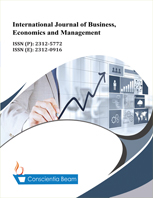The Euribor and EONIA Reform: Achieving Regulatory Compliance while Protecting Financial Stability
DOI:
https://doi.org/10.18488/journal.62.2021.82.50.69Abstract
Based on an extensive review of the academic and legal literature combined with a screening of news articles and policy papers, this article is the first to describe in great detail the events leading up to the EURIBOR reform and the efforts to make EURIBOR compliant with the European Benchmark Regulation. It documents the development of the hybrid EURIBOR methodology to ensure the benchmark to be anchored to transactions as much as possible thereby reducing manipulative behavior. The article further explains the actions undertaken by the administration and the EU RFR Working Group to transition from EONIA towards €STER and the reasoning behind the choice to recalibrate EONIA into €STER plus a spread. Although EURIBOR is considered BMR-compliant since 2 July 2019 and EONIA can continue to be used until 3 January 2022, this article explains why market participants should not be disincentivized to already take actions to provide for fallback rates to EURIBOR in their legal documentation, and to move away from EONIA. This study addresses various fallback methodologies.

